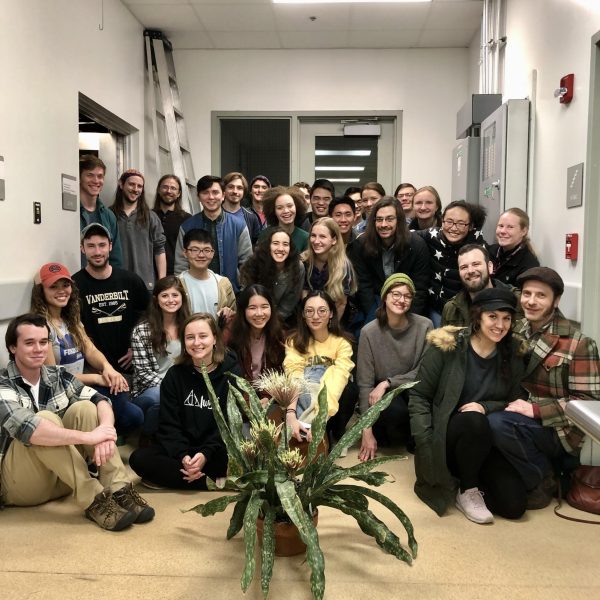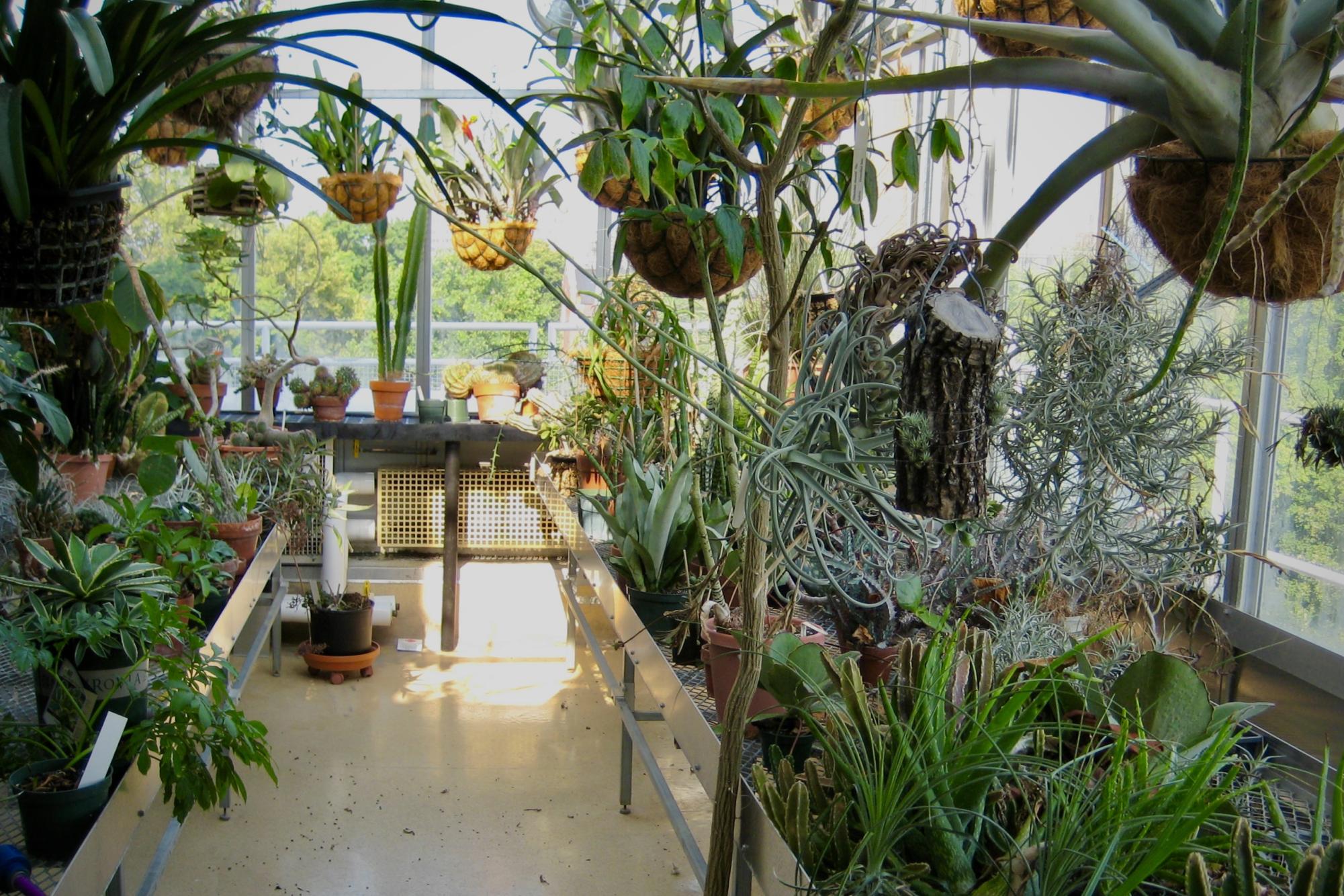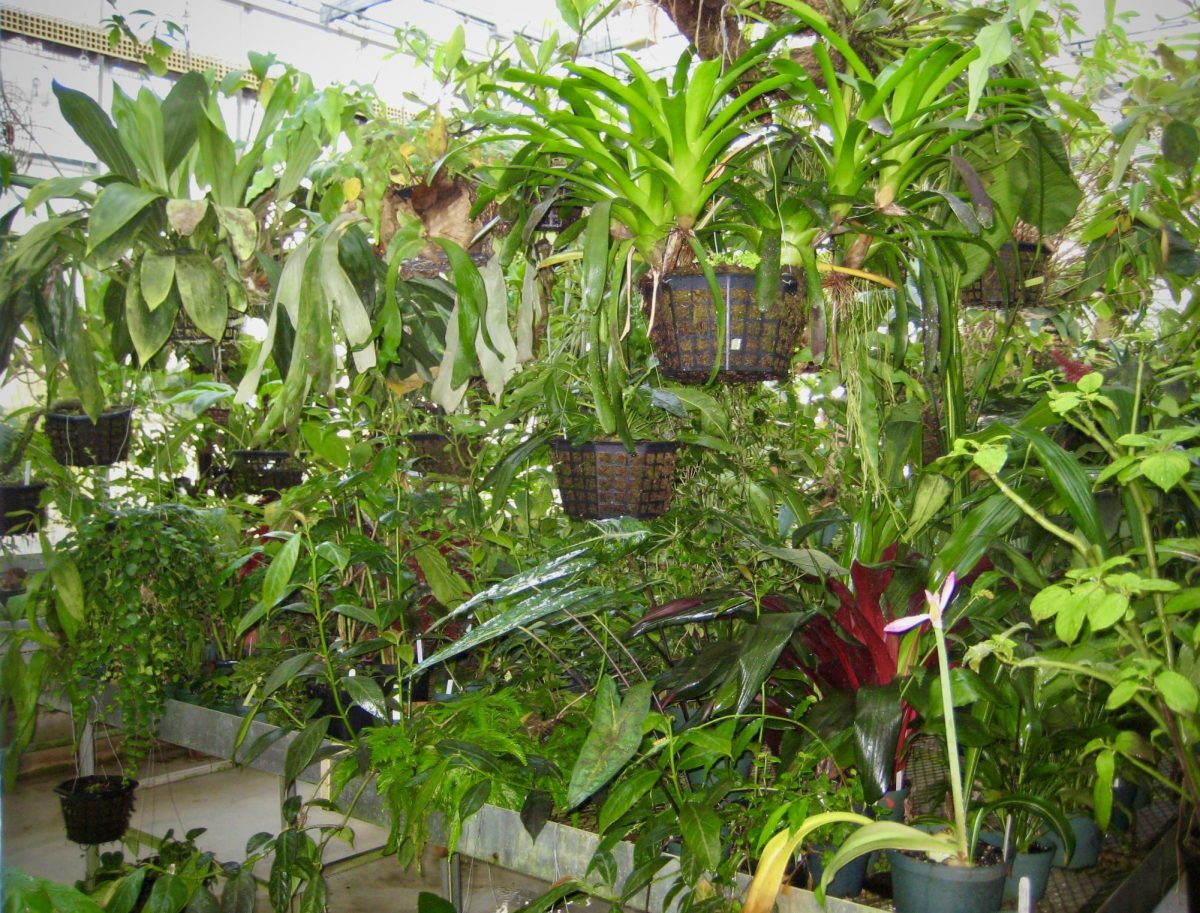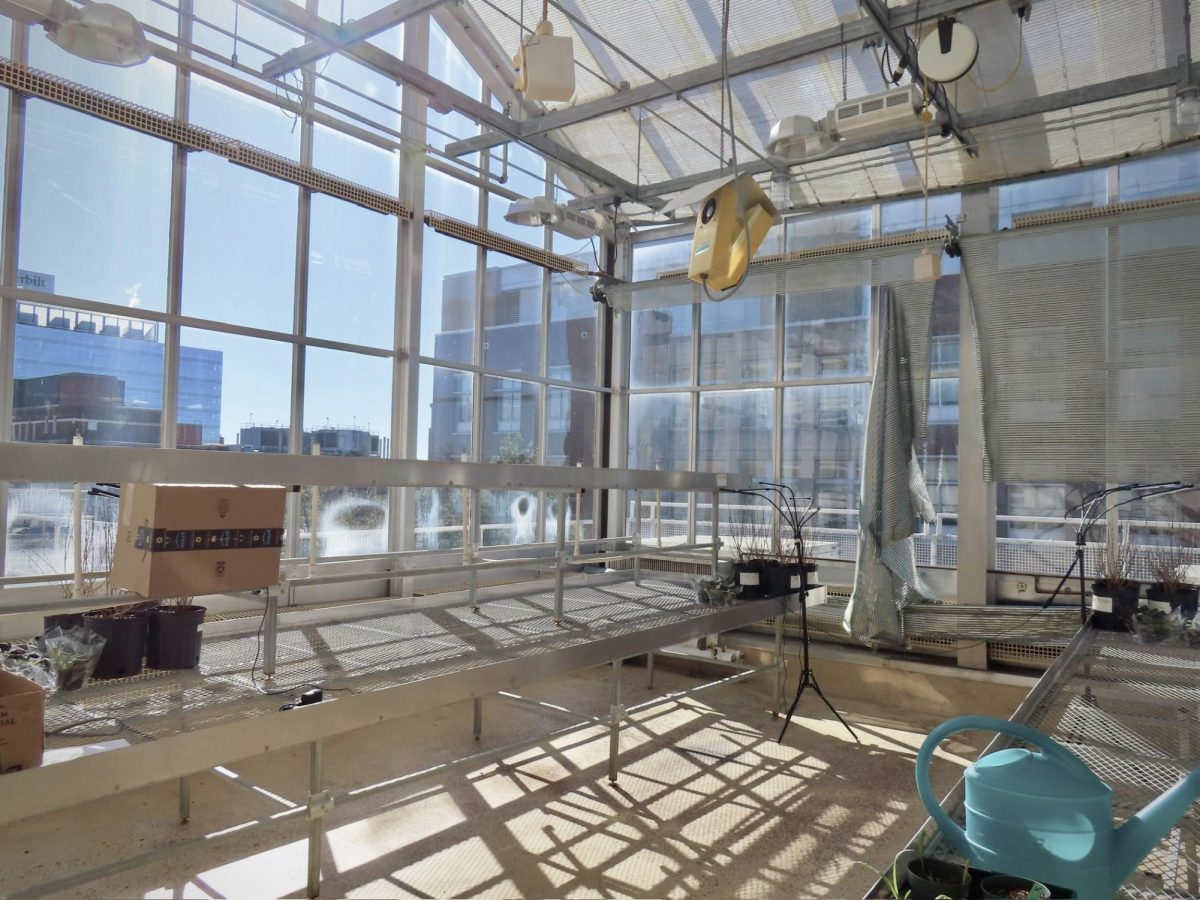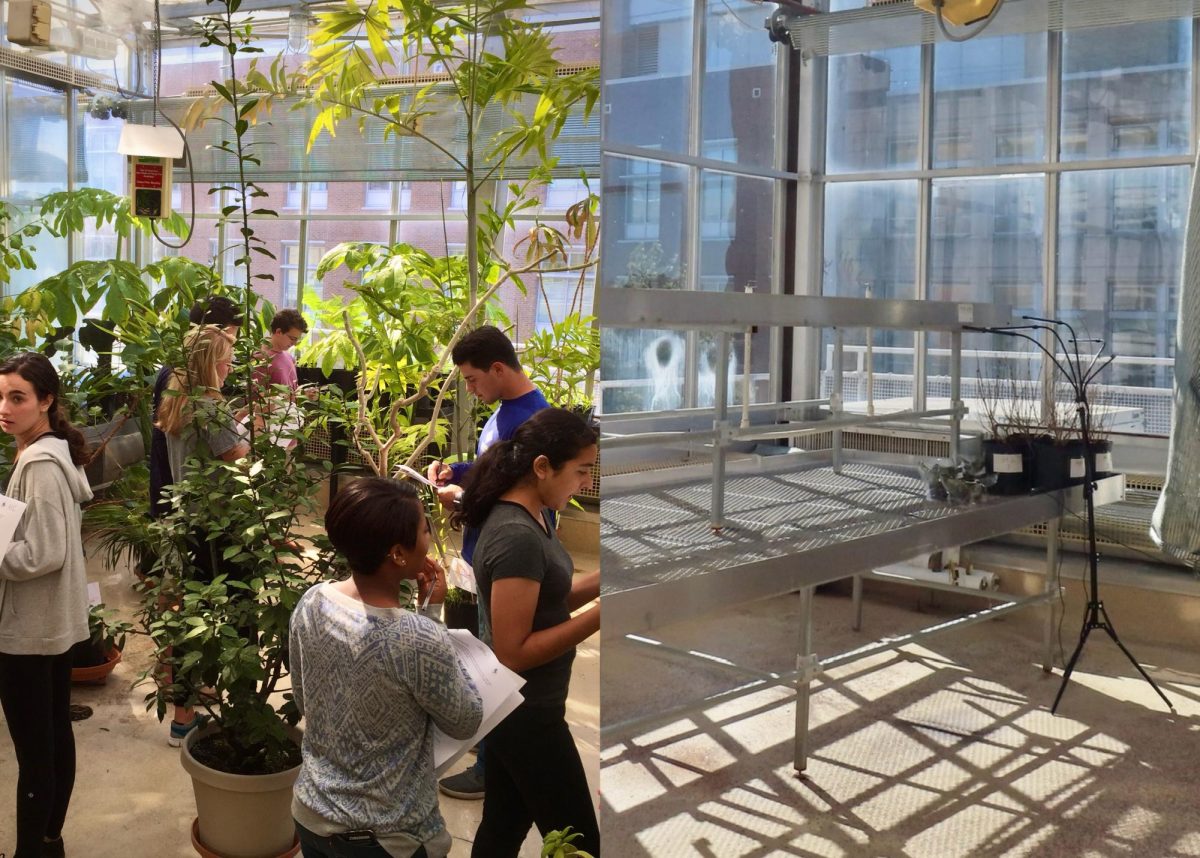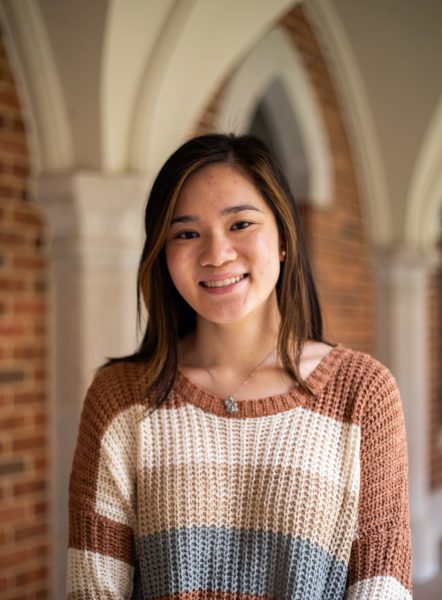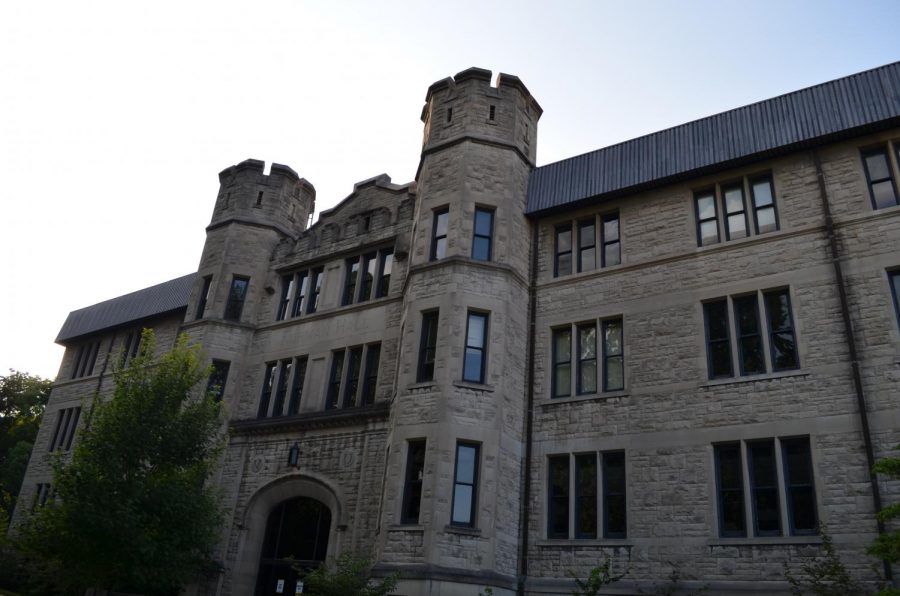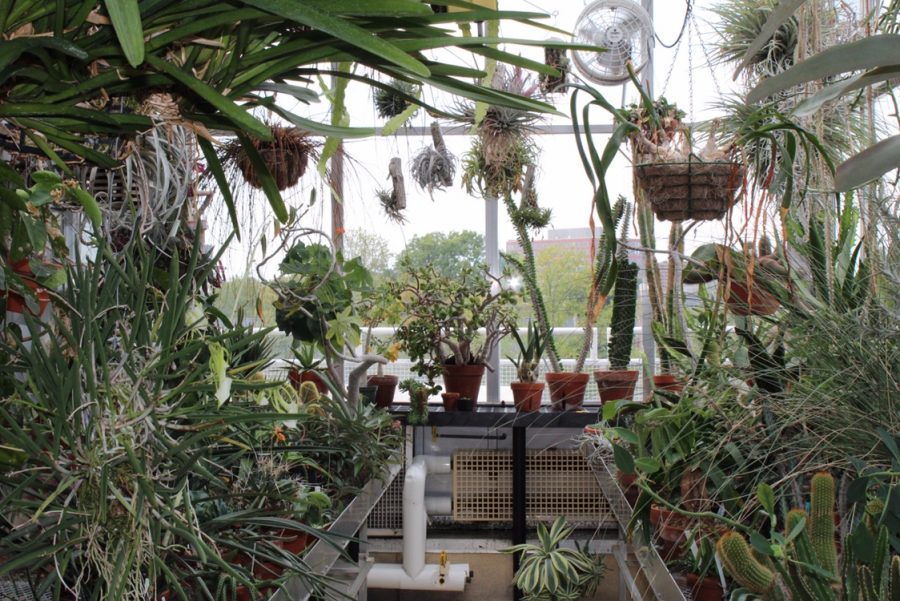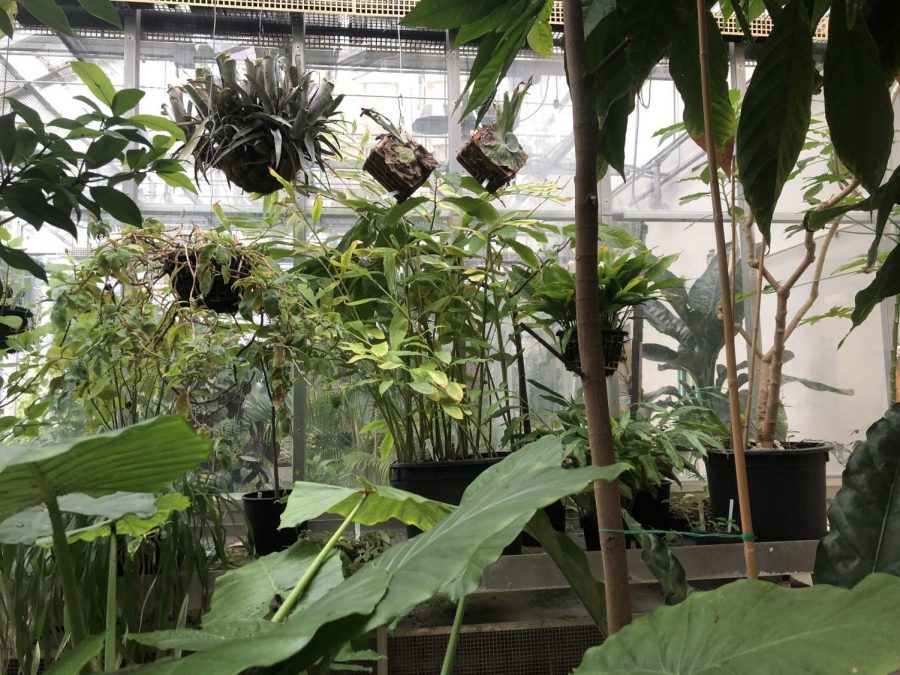One of Vanderbilt’s most notable features is its arboretum status. With more than 6,000 trees, a boasted 3:1 squirrel-to-student ratio and numerous bird species on campus, it’s easy for students to immerse themselves in nature without even leaving the Vanderbubble. However, what many students and staff don’t know is that Vanderbilt is also home to plants in a valuable facility tucked away on the seventh floor of MRB III: the Vanderbilt greenhouse.
The history of the greenhouse
The original Vanderbilt greenhouse was built as an addendum to Buttrick Hall in the 1930s, when the Department of Biological Sciences was housed there. When the department was relocated to Stevenson Center 2 around 2000, a new greenhouse was built, which still stands today. Despite its newness, the greenhouse is currently little more than a ghost town, containing only a handful of plants. Many students probably don’t even know it exists.
I assumed the greenhouse was nonfunctional, but until I took Dr. Carl Johnson’s introductory biology course, I never knew why. According to Johnson, the greenhouse has been out of use since 2020, when the former manager, Jonathan Ertelt, was let go due to lack of income to Vanderbilt from the facility. At the time of Ertelt’s release, he was told that Vanderbilt planned to renovate Stevenson 2 the following year, and the greenhouse needed to be emptied before the renovation occurred. Ever since Ertelt scattered his plant collection of over 1200 species in the greenhouse, it had been essentially empty until this year due to a broken ventilation system.
When COVID-19 hit, the plans to renovate Stevenson 2 came to a halt. However, according to Johnson, the plans have recently resurfaced. He sees this renovation as an opportunity to restore the greenhouse to its previous state: a hub for research, education and science outreach.
“When Stevenson 2 is renovated, all the heating and air conditioning in the building will be replaced anyway,” Johnson said. “Replacing the ventilation system in the greenhouse could be done much more efficiently as part of that renovation than if it were to be done on its own.”
Research and education in the greenhouse
As of now, the greenhouse is only suitable for use in research projects that do not require temperature control. One such project is being conducted by Dr. Lin Meng, a global change ecologist in the Department of Earth and Environmental Sciences (EES). Her current project examines how the urbanization of cities, specifically changes in the types of light used for infrastructure, affect plant growth and seasonal cycles. She recently received a small grant to carry out this project, and she has been conducting it in the greenhouse with the help of two undergraduate students since fall 2023.
“We tailored our experimental design to focus on the effects of light so that it doesn’t really need heating or cooling,” Meng said. “But ideally, we want to control temperature. In the future, if the heating and cooling were to work and we were able to control temperature, that would be fantastic.”
The greenhouse could also have widespread interdisciplinary uses. Now that she can use the greenhouse, Meng also sees a potential opportunity to collaborate with researchers in the College of Engineering and the Data Science Institute by using her new experimental data to improve former models of climate change effects, which were not previously informed by her own data.
In addition to research, the greenhouse has the potential to serve many useful educational purposes for EES classes. In the fall, Meng teaches an introductory climate change course. When she mentioned the greenhouse to her introductory climate change class, her students were surprised to learn that Vanderbilt even had one.
“I can see that most students aren’t aware that there is a greenhouse,” Meng said. “They tell me, ‘Oh, if I knew there was a greenhouse, I would have really loved to do research there.’ I think there’s a lot of student interest to work in the greenhouse and to see how we can do a plant experiment there to understand climate change impacts. The greenhouse is also a great model for Earth’s atmosphere, and I really want to take my students there to talk about the greenhouse effect.”
One of the undergraduates working with Meng, junior Lauren Bishop, also touched on this topic. Bishop entered Vanderbilt intending to pursue a major in biological sciences, but she later switched her major to ecology, evolution and organismal biology (EEOB). Even though Vanderbilt was ranked #10 in private university research expenditures in the 2022 Higher Education Research and Development Survey, Bishop feels that she does not have the same access to research opportunities as other students in STEM fields at Vanderbilt, like medicine, molecular biology and chemistry.
“There’s only a few people with the EEOB major, and there’s very limited researchers working in that field at Vanderbilt,” Bishop said. “If you try to get involved in medical research, there are so many options, but research pursuits that aren’t directly related to human health seem to be less funded.”
Bishop also discussed her experience taking BSCI 1103L, the lab component of the class Green Earth: The Biodiversity of Evolution of Plants. She states that the class went on hikes to do labs at Percy Warner Park because there was no other way of studying the plants they wanted to see.
Before 2020, BSCI 1103L professor Dr. Amanda Benson often took her classes to the greenhouse to observe different plants. Benson explained that the greenhouse had something that hikes did not: immense biodiversity and specimens that were not native to Tennessee.
“At one time, the greenhouse was filled with lush plants from around the world,” Benson said. “Unlike the forests in middle Tennessee, which lack a wide variety of fern species, the greenhouse contained a diverse array of ferns from around the globe. There was even a room in the greenhouse that contained just tropical plants, and the students had the opportunity to interact with and observe the flowering of tropical plants firsthand.”
The future of the greenhouse
Whether the greenhouse will be torn down or restored is still uncertain, but there is certainly no lack of past and present interest. In addition to research and laboratory purposes, the greenhouse could also be a valuable resource for the Vanderbilt Student Volunteers for Science (VSVS). VSVS partners with many public schools in the Nashville area, sending Vanderbilt volunteers to teach younger students science lessons through interactive activities and experiments. In a letter to the former Dean of the College of Arts and Science John Geer, VSVS coordinator Paige Ellenberger expressed her desire to use the greenhouse to grow sprouts to use in these lessons.
“I would really love to be able to increase VSVS’s (and therefore Vanderbilt’s) ability to reach the community in a way that we may otherwise not be able to without a space like this,” Ellenberger said. “The issue we face currently is the instability of the greenhouse’s future. Without a long-term plan, I cannot begin developing a program to properly utilize the space.”
The greenhouse also had lasting effects on the handful of students who volunteered there to help with plant upkeep and care as well as others who visited — more than 1,000 in the 2018-19 academic year. In a newsletter for the Association of Education and Research Greenhouse Curators published in 2022, Jonathan Ertelt alluded to the impact the greenhouse had on the Vanderbilt community.
“In addition to being a place to learn about plants, the ‘greenhouse floor’ became a safe space, a place where a good many students started to come just to de-stress, unwind a bit after a test or sometimes to do a bit of studying in a quiet and soothing space,” Ertelt said.
Just before he left the greenhouse for the last time, Ertelt wrote a document to Vanderbilt called “State of the Greenhouses 2019.” In it, he detailed the growth of student interest and events in the greenhouse during then-recent years. It was home to one Ph.D. research project, a biology class-wide research assignment and several independent study classes. Twice annually, the greenhouse hosted a plant giveaway of extra sprouts and cuttings. Several times, Ertelt also held evening events to watch night-blooming cacti extend their flowers.
In the document, Ertelt also detailed a message from one of his former greenhouse volunteers who had recently graduated and planned to attend medical school.
“I’m still uncertain what my mark on the medical community will be, but I do know one thing with certainty: I wish to leave a mark on others as you have on me. You and the greenhouses were there for me in some of my darker times in undergrad. You both provided me a space to reflect and contemplate large life decisions and to come to terms with things I can’t control. The greenhouses will always hold a special spot in my heart and our talks will always be one of the highlights of my undergraduate career.”
